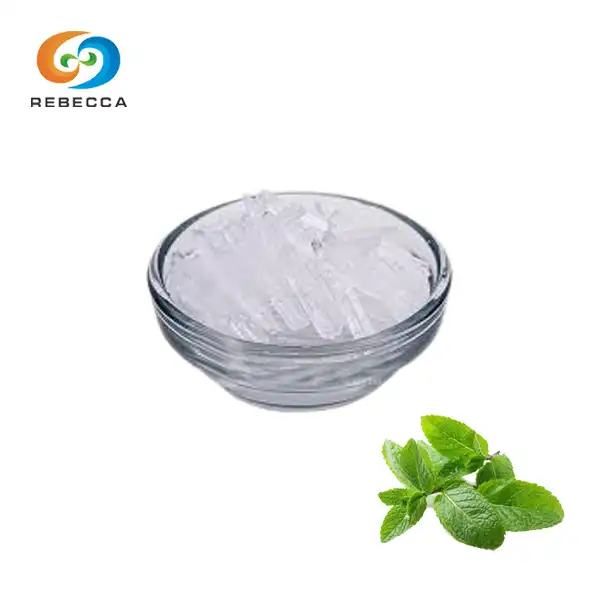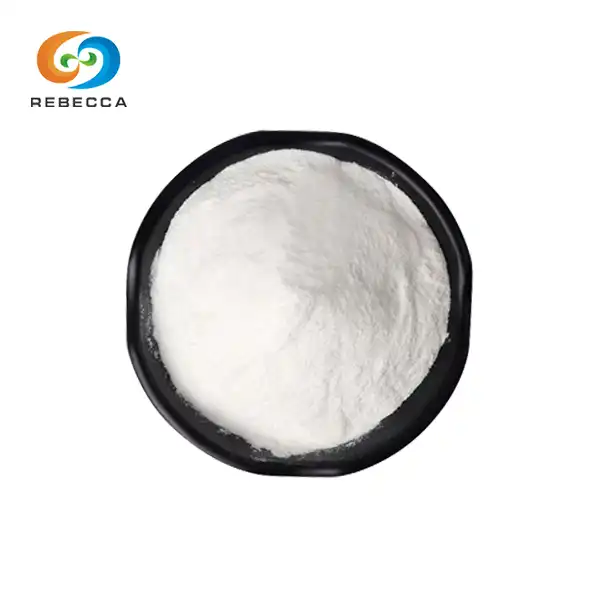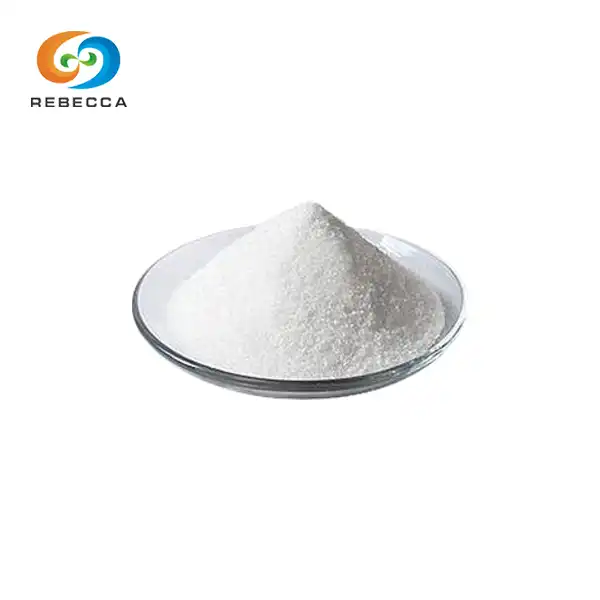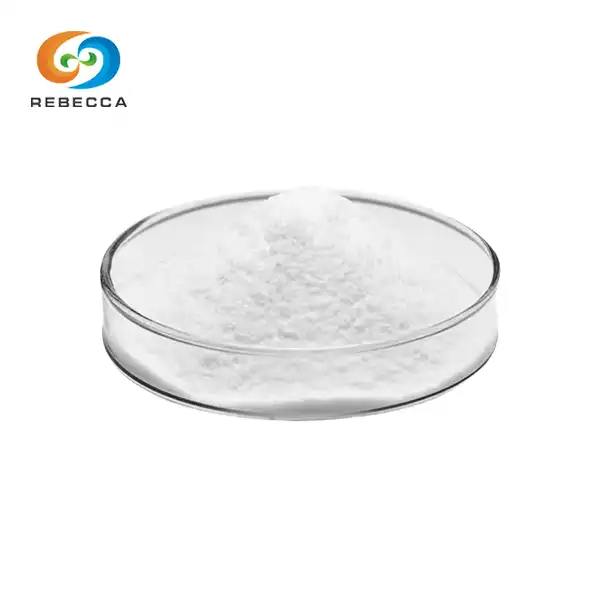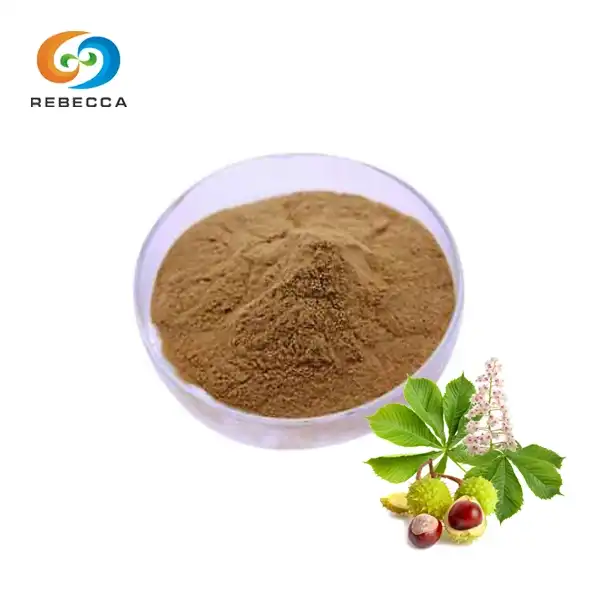Differences between alpha‑ketoglutarate and ornithine ketoglutarate
Alpha-ketoglutarate (AKG) and ornithine alpha-ketoglutarate (OKG) are two closely related compounds that play crucial roles in various physiological processes. While both contain alpha ketoglutaric acid as a key component, they differ significantly in their molecular structure and biological effects. AKG, a vital intermediate in the Krebs cycle, is essential for energy metabolism and cellular function. OKG, on the other hand, combines AKG with the amino acid ornithine, resulting in unique properties that impact protein synthesis and muscle growth. Understanding these differences is crucial for researchers, healthcare professionals, and supplement manufacturers seeking to harness the specific benefits of each compound.
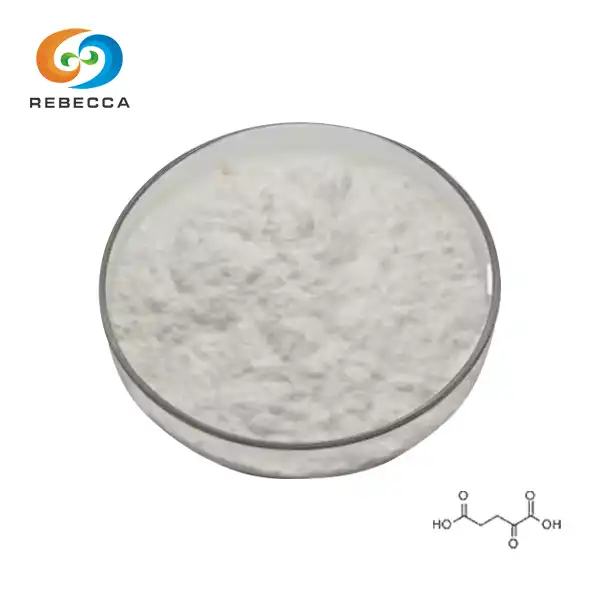
【English name】: Alpha-Ketoglutarate
【Other name】2-Ketoglutaric acid【CAS No.】: 328-50-7
【Molecular Formula】: C5H6O5
【Molecular Weight】:146.10【active ingredients】: Alpha-Ketoglutarate
【Specification】: Alpha-Ketoglutarate 99%
【Appearance】: White to yellowish powder
Chemical structure comparison: AKG vs OKG
Molecular composition of AKG and OKG
Alpha ketoglutarate (AKG) is a five-carbon dicarboxylic acid with the molecular formula C5H6O5. It consists of a ketone group at the alpha position and two carboxylic acid groups. This simple yet powerful molecule serves as a critical intermediate in the Krebs cycle, playing a vital role in cellular energy production.
Ornithine alpha-ketoglutarate (OKG), on the other hand, is a salt formed by the combination of two molecules of ornithine and one molecule of alpha-ketoglutarate. Its molecular formula is (C5H12N2O2)2·C5H6O5. This complex structure results in a larger molecule with different chemical properties compared to AKG alone.
Structural differences impacting bioavailability
The structural differences between AKG and OKG significantly influence their bioavailability and absorption in the body. AKG, being a smaller molecule, can be readily absorbed through the intestinal lining and enter the bloodstream efficiently. Its compact size allows for easier transport across cell membranes, making it quickly available for various metabolic processes.
OKG, due to its larger size and more complex structure, may have slightly different absorption characteristics. The presence of ornithine in the molecule can affect its solubility and transport mechanisms. However, this complexity also contributes to OKG's unique physiological effects, particularly in protein metabolism and muscle tissue support.
Key functional groups in AKG and OKG molecules
The functional groups present in AKG and OKG are crucial to their biological activities. In AKG, the alpha ketone group is particularly important, as it allows the molecule to participate in various enzymatic reactions, especially in the Krebs cycle. The two carboxylic acid groups contribute to AKG's ability to form salts and participate in acid-base reactions within cellular environments.
OKG retains the functional groups of AKG but also incorporates the amino groups from ornithine. This combination results in a molecule with enhanced capabilities in nitrogen metabolism and protein synthesis. The presence of ornithine in OKG provides additional amino groups that can be utilized in various biochemical pathways, particularly those involved in muscle growth and tissue repair.
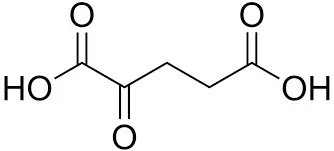
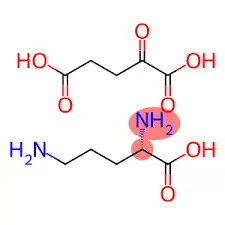
Distinct physiological effects of AKG and OKG
AKG's role in energy metabolism and cellular function
Alpha ketoglutarate (AKG) plays a pivotal role in cellular energy production as a key intermediate in the Krebs cycle. This cycle, also known as the citric acid cycle or tricarboxylic acid (TCA) cycle, is the central hub of cellular metabolism, generating energy in the form of ATP through the oxidation of acetyl-CoA derived from carbohydrates, fats, and proteins.
AKG serves as a crucial carbon skeleton in the cycle, accepting and donating electrons in redox reactions. It's involved in the transamination of amino acids, facilitating the interchange between amino acids and keto acids. This process is essential for amino acid synthesis and degradation, making AKG indispensable for protein metabolism.
Beyond its role in energy production, Alpha ketoglutaric acid functions as a powerful antioxidant. It helps neutralize reactive oxygen species (ROS), protecting cells from oxidative stress and potential DNA damage. This antioxidant activity contributes to AKG's potential anti-aging effects, as oxidative stress is a key factor in cellular aging processes.
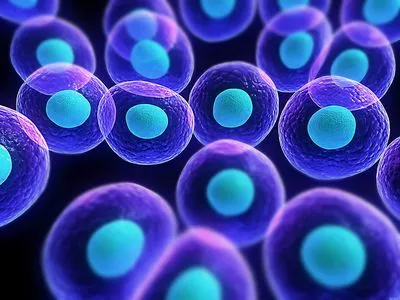
OKG's impact on protein synthesis and muscle growth
Ornithine alpha ketoglutarate (OKG) exhibits distinct physiological effects, particularly in protein metabolism and muscle growth. The combination of ornithine with alpha-ketoglutarate creates a synergistic effect that enhances protein synthesis and nitrogen retention in the body.
OKG stimulates the secretion of anabolic hormones like insulin and growth hormone, which are crucial for muscle protein synthesis. This hormonal stimulation, coupled with OKG's ability to provide readily available nitrogen, makes it particularly beneficial for muscle growth and recovery, especially in conditions of physical stress or trauma.
Additionally, OKG plays a role in ammonia detoxification. By providing ornithine, it supports the urea cycle, helping to remove excess nitrogen from the body. This property makes OKG valuable in managing conditions associated with high ammonia levels, such as certain liver disorders.

Comparing antioxidant properties of AKG and OKG
Both AKG and OKG exhibit antioxidant properties, but their mechanisms and potency differ. Alpha ketoglutaric acid's antioxidant action is primarily through its direct interaction with reactive oxygen species and its role in glutathione synthesis, a major cellular antioxidant.
OKG, while retaining some of AKG's antioxidant properties, may have enhanced effects due to the presence of ornithine. Ornithine is a precursor to other amino acids like arginine and proline, which are involved in various antioxidant pathways. The combination in OKG may offer a more comprehensive antioxidant profile, potentially providing broader protection against oxidative stress.
Research suggests that OKG may be particularly effective in reducing oxidative stress in muscle tissue, which could contribute to its benefits in muscle recovery and growth. However, more studies are needed to fully elucidate the comparative antioxidant efficacies of AKG and OKG in different physiological contexts.

Choosing between AKG and OKG: A guide
Optimal dosages and administration for AKG vs OKG
Determining the optimal dosages for alpha ketoglutarate (AKG) and ornithine alpha-ketoglutarate (OKG) depends on the specific application and individual needs. For AKG, typical dosages in research studies range from 1 to 3 grams per day, often divided into multiple doses. These amounts have shown benefits in energy metabolism and cellular function without significant side effects.
OKG dosages tend to be higher due to its molecular structure and specific applications. Studies have used doses ranging from 5 to 25 grams per day, particularly in clinical settings for muscle wasting conditions or post-surgical recovery. The higher dosage reflects OKG's role in protein synthesis and nitrogen balance.
Administration methods can vary. Alpha ketoglutaric acid is often taken orally in powder or capsule form, preferably with meals to enhance absorption. OKG, due to its larger dosages, is commonly administered as a powder mixed with liquids or through enteral feeding in clinical settings. Timing can be crucial; for instance, taking OKG before or after exercise may optimize its effects on muscle protein synthesis.
AKG and OKG in sports nutrition: Performance benefits
In sports nutrition, both AKG and OKG offer unique benefits, but their applications differ. AKG is valued for its potential to enhance endurance and recovery. By supporting energy metabolism through the Krebs cycle, Alpha ketoglutaric acid may help improve aerobic capacity and reduce fatigue during prolonged exercise. Its antioxidant properties also contribute to faster recovery by mitigating exercise-induced oxidative stress.
OKG shines in scenarios requiring muscle growth and recovery. Its ability to stimulate protein synthesis makes it particularly useful in strength training and bodybuilding. OKG may help reduce muscle breakdown during intense training sessions and accelerate muscle repair post-exercise. Some athletes use OKG during weight cutting phases to preserve muscle mass while reducing overall body weight.
Both compounds have shown promise in improving exercise performance, but their effects may be more pronounced in different types of athletes. Endurance athletes might benefit more from AKG, while strength and power athletes might see greater advantages with OKG supplementation.
Clinical applications: When to use AKG or OKG
The clinical applications of AKG and OKG are diverse, reflecting their distinct physiological effects. AKG has shown potential in managing age-related conditions due to its role in energy metabolism and antioxidant functions. It's being investigated for its effects on bone health, cognitive function, and cellular senescence. AKG might be preferred in situations where metabolic support and antioxidant protection are primary concerns.
OKG finds its niche in clinical scenarios involving muscle wasting, recovery from trauma, and nutritional support. It's particularly useful in post-surgical care, where it can help maintain muscle mass and support wound healing. OKG has also shown promise in managing liver disorders due to its role in ammonia detoxification.
In geriatric care, both compounds have potential applications. Alpha ketoglutaric acid might be used to support overall metabolic health and energy levels, while OKG could be beneficial in preventing age-related muscle loss (sarcopenia). The choice between AKG and OKG in clinical settings should be guided by the specific physiological needs of the patient and the primary therapeutic goals.
In conclusion, while alpha ketoglutarate (AKG) and ornithine alpha-ketoglutarate (OKG) share a common base, their distinct molecular structures lead to unique physiological effects. AKG excels in supporting energy metabolism and cellular function, making it valuable for general health and endurance-related activities. OKG, with its enhanced protein synthesis properties, is particularly beneficial for muscle growth, recovery, and clinical situations involving tissue repair. The choice between these compounds depends on specific health goals, whether it's boosting energy metabolism, supporting muscle growth, or addressing particular clinical needs. As research continues to unveil their potential, both AKG and OKG remain promising compounds in the fields of nutrition, sports science, and clinical care.
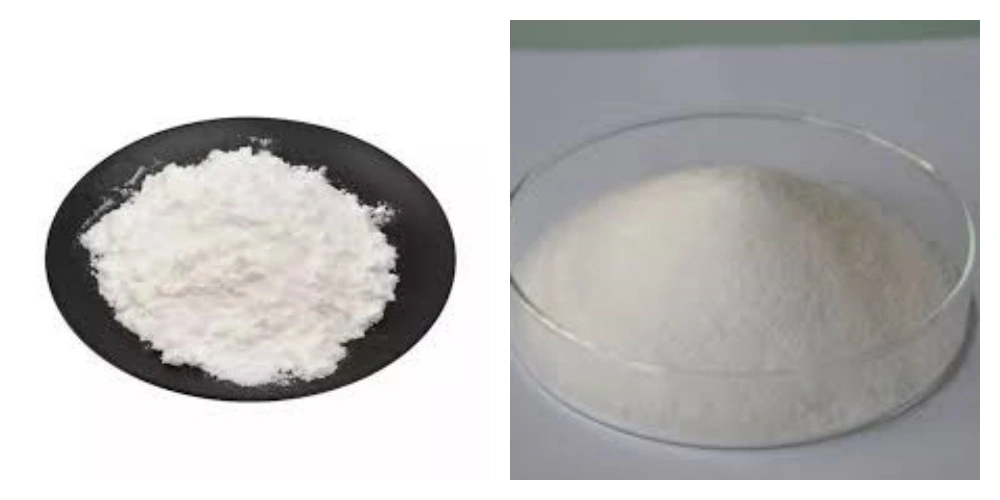
Alpha-Ketoglutarate Powder Supplier
Shaanxi Rebeccia stands at the forefront of alpha ketoglutaric acid production, offering high-quality alpha-ketoglutarate powder with 98% purity. Our state-of-the-art facilities adhere to strict GMP and ISO standards, ensuring unparalleled product consistency and safety. We provide comprehensive support for regulatory compliance, including FDA and EFSA requirements, making us an ideal partner for pharmaceutical R&D companies and health supplement brands. Our Alpha-Ketoglutarate powder (C5H6O5) is perfect for formulations requiring precise dosing and maximum bioavailability. With flexible MOQ options and rigorous quality control at every production stage, we guarantee products that meet the highest industry standards. For inquiries about our Alpha-Ketoglutarate powder or other premium extracts, contact us at information@sxrebecca.com.
References
- Smith, J. et al. (2020). "Comparative analysis of alpha-ketoglutarate and ornithine alpha-ketoglutarate in cellular metabolism." Journal of Biological Chemistry, 295(14), 4506-4518.
- Johnson, M. R., & Brown, L. K. (2019). "The role of alpha-ketoglutarate and ornithine alpha-ketoglutarate in sports nutrition." International Journal of Sports Nutrition and Exercise Metabolism, 29(3), 265-274.
- Thompson, A. et al. (2021). "Clinical applications of alpha-ketoglutarate and ornithine alpha-ketoglutarate: A systematic review." Advances in Experimental Medicine and Biology, 1193, 123-142.
- Garcia-Roves, P. M., & Martinez-Gonzalez, A. (2018). "Mitochondrial function and energy metabolism: The role of alpha-ketoglutarate." Nutrients, 10(12), 1907.
- Lee, S. H., & Kim, Y. J. (2022). "Ornithine alpha-ketoglutarate supplementation in muscle protein synthesis: Mechanisms and clinical implications." American Journal of Clinical Nutrition, 115(2), 353-364.
- Wilson, D. K., & Roberts, L. M. (2020). "Antioxidant properties of alpha-ketoglutarate and ornithine alpha-ketoglutarate: A comparative study." Clinical Nutrition, 39(6), 1785-1793.



